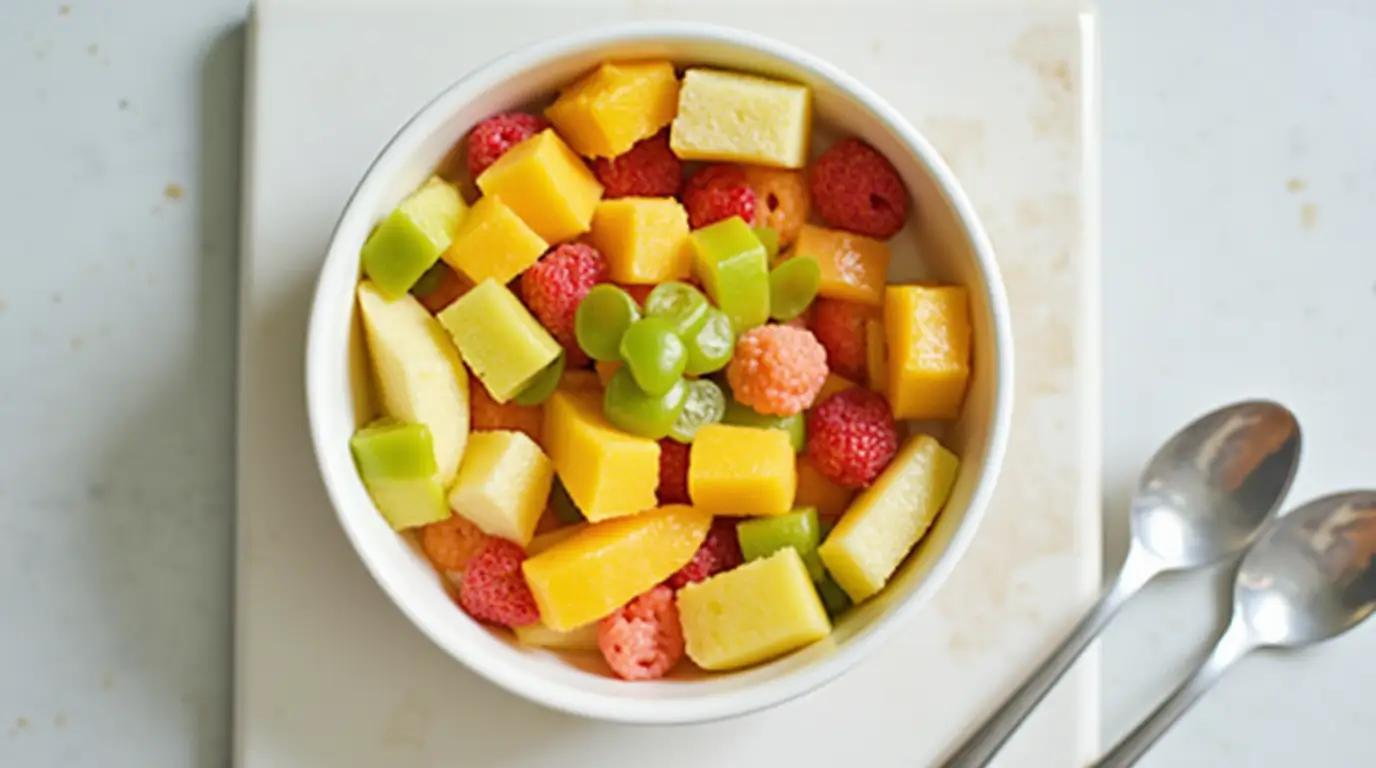Tutti Frutti Baby Food
Table of Contents
When it comes to introducing your baby to solids, fruits are some of the best first foods you can offer. They are naturally sweet, packed with nutrients, and easy to prepare. Tutti Frutti Baby Food takes this idea to the next level by combining a variety of fruits into colorful, tasty blends that babies love. In this guide, we will dive deep into how to create nutritious tutti frutti blends, the best fruits to use, delicious recipes, and smart tips for serving your baby safely.
What is Tutti Frutti Baby Food?
Tutti Frutti Baby Food refers to homemade or store-bought fruit blends that combine several types of fruits into one smooth, easy-to-eat meal.
The goal is to introduce a range of flavors, textures, and nutrients, helping babies develop their palate and love for healthy foods from an early age.
Popular fruits used in tutti frutti blends include:
- Banana
- Apple
- Mango
- Pear
- Blueberries
- Peach
- Watermelon
By blending fruits together, parents can create endless flavor combinations that are naturally sweet, full of vitamins, and gentle on little tummies.
Why Choose Tutti Frutti for Your Baby?
Benefits include:
- Exposure to multiple tastes and textures early on
- High intake of vitamins, antioxidants, and fiber
- Encourages acceptance of a variety of fruits
- Supports healthy digestion
- Naturally sweet without added sugars
Babies who experience a wider variety of flavors during weaning may grow up to be less picky eaters.

Nutritional Benefits of Common Tutti Frutti Ingredients
| Fruit | Key Nutrients | Benefits for Babies |
|---|---|---|
| Banana | Potassium, Vitamin B6 | Supports heart health and energy |
| Apple | Fiber, Vitamin C | Aids digestion and boosts immunity |
| Mango | Vitamin A, Folate | Enhances eye and brain development |
| Blueberry | Antioxidants, Vitamin K | Promotes brain and immune health |
| Pear | Fiber, Vitamin C | Gentle on the stomach, aids digestion |
| Watermelon | Vitamin A, Hydration | Keeps baby hydrated, supports vision |
Best Fruits to Include in Tutti Frutti Baby Food
When making Tutti Frutti Baby Food, it’s best to choose:
- Seasonal fruits for freshness and flavor
- Organic fruits when possible to minimize pesticide exposure
- Ripe fruits for easier digestion
Ideal First Fruits:
- Banana
- Pear
- Apple
Ideal Fruits After 8 Months:
- Mango
- Blueberry
- Peach
- Watermelon
Introduce one new fruit at a time if you’re still testing for allergies, and once individual tolerance is confirmed, you can start blending different fruits together.
How to Make Homemade Tutti Frutti Baby Food
Making tutti frutti blends at home is simple and gives you full control over ingredients.
Basic Method:
- Wash fruits thoroughly.
- Peel and remove any seeds or pits.
- Steam harder fruits (like apples) until soft.
- Blend fruits together into a smooth puree.
- Serve fresh or store properly.
Homemade options can also be frozen in small batches for quick meals. Many parents love preparing their own blends and storing them in [Baby Food Pouches] for easy, on-the-go feeding.

Tutti Frutti Baby Food Recipes: Step-by-Step
Here are some easy combinations to get you started:
Beginner Blend (6 months+)
- Banana + Steamed Apple
Sweet and Mild (7 months+)
- Pear + Peach + Banana
Berry Burst (8 months+)
- Blueberry + Banana + Mango
Tropical Fun (9 months+)
- Mango + Pineapple + Banana
You can adjust thickness by adding a little breast milk, formula, or water to achieve the perfect consistency.
Tutti Frutti Baby Food Recipe Variations
| Recipe Name | Ingredients | Best Age Range |
|---|---|---|
| Gentle Start | Banana + Apple | 6 months+ |
| Summer Breeze | Mango + Pear | 7 months+ |
| Berry Fiesta | Blueberries + Banana | 8 months+ |
| Tropic Adventure | Mango + Pineapple + Watermelon | 9 months+ |
| Autumn Harvest | Apple + Pear + Plum | 7 months+ |
Tips for Serving Tutti Frutti Baby Food
To ensure a positive experience:
- Always serve at a safe temperature (not too hot or cold)
- Check texture — smooth for younger babies, chunkier for older ones
- Watch for signs of allergy with new fruits
- Let your baby self-feed by offering purees on a spoon or using self-feeding pouches.
Transitioning from Purees to Chunky Textures
As your baby gets older, you’ll want to gradually increase the texture of their tutti frutti blends:
- Start by blending less and leaving small soft chunks
- Offer mashed fruits rather than fully pureed versions
- Encourage self-feeding using spoons or fingers
This helps build chewing skills and independence!

For advanced options tailored to growing babies, check out our selections at [Serenity Baby Food], offering organic, nutrient-rich blends perfect for every stage.
Common Questions About Tutti Frutti Baby Food
Can I freeze tutti frutti blends?
Yes! Freeze them in ice cube trays and thaw as needed.
How long does homemade tutti frutti baby food last?
Fresh blends last 48–72 hours in the fridge. Frozen blends can last up to 3 months.
Do I need to cook all fruits before blending?
No. Soft fruits like banana and ripe pear don’t need cooking. Harder fruits like apple or peach benefit from light steaming.
What if my baby doesn’t like a certain blend?
Keep trying! Taste buds are developing, and repeated exposure often leads to acceptance.
Homemade vs Store-Bought Tutti Frutti Baby Food
Both homemade and store-bought options can be healthy.
Homemade Benefits:
- Complete control over ingredients
- Freshness
- Cost savings
Store-Bought Benefits (like Serenity Baby Food):
- Convenience
- Certified organic options
- Carefully crafted for balanced nutrition
A combination of both works well for many families, offering flexibility and ease.
Conclusion: Tutti Frutti Baby Food for a Healthier, Happier Baby
Introducing your baby to the colorful world of Tutti Frutti Baby Food is a joyful and rewarding experience. By combining fresh fruits into exciting blends, you nourish your little one with essential vitamins, minerals, and flavors that will support their growth and development.
Whether you make your own blends at home or explore nutritious options like [Baby Food Pouches] and [Serenity Baby Food], you’re setting the stage for a lifetime of healthy eating.

